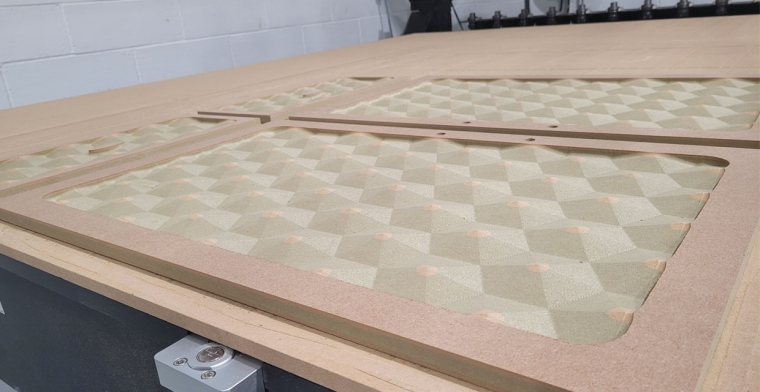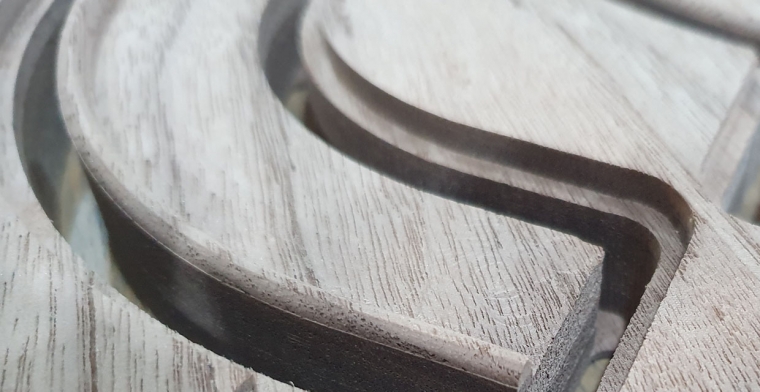In the current climate of huge energy price rises (and more to come), trying to reduce costs is becoming more of a priority to every business. CNC World shares its expertise on the matter ...
Running a CNC machine uses a lot of energy. Before we look at ways to reduce those costs, we need to understand the different factors that influence the amount it costs to produce a part.
Material prices
Material costs can vary, often in relation to demand and availability, with freight costs playing a large part. Some grades of plywood are currently 100% more expensive to buy now than they were in January this year. Much of the UK’s stock of ply came from Russia, since stopping imports the demand on other producers has meant an unprecedented cost increase, although fluctuations aren’t normally so high.
Machining time
This is quite simply the time it takes to machine the part. There are many factors that come into play here, including how intricate the part is and if custom finishes are requested.
Set up costs
These mainly come down to the person hours involved and include setting up the tools, getting the material on the bed in the right position and setting up the design file. Set up time isn’t just at the start, it also includes the time part way through machining if a part needs to be manually turned.

How to reduce CNC router costs
It’s not about cutting corners but instead thinking about the job at hand and asking yourself “do I need to do that this time?” Let us take a look at ways to reduce the costs:
Add a radius to internal edges if it doesn’t have to be a sharp corner. This reduces machining time because you don’t have to change tools to achieve the internal corner. Only specify tolerances when necessary because tight tolerances mean additional machining time. If it’s not critical and hasn’t been specified on the technical drawing, the standard tolerances of 0.125mm or better will be sufficient. Consider the material; machining time is directly affected by the materials you’ve chosen to work with:a. There are different grades of materials; it's not always necessary to use the highest quality for each job.
b. Can you buy material in bulk and save with economies of scale?
c. Some materials can be machined quicker than others. It may be that the material cost is higher, but the job is completed quicker and therefore costs are reduced.
Simplify the set-up. Small design tweaks can make a big difference to the time the machine is running and the man power to support it. Make sure that whoever is designing the part is on board with reducing costs because they can have a big impact on the cost of the final part. Choosing the right tool for the job means that your CNC machine can run at its optimum speed for that particular material. This will reduce the amount of time the machine is running. If you need to change tools on a job consider installing an automatic tool changer if you haven’t got one already. The finish … Engraving and embossing looks really good but it is additional time with the machine running. When working on a prototype do you need every detail? If it is the final part, there are cheaper ways such as painting post-cutting that can create amazing effects. As with most things, there are economies of scale. If you’re doing mass production work, your set up costs per part will be smaller than if you are completing a one off job. The costs of a smaller one-off job can be reduced if two jobs can be fitted onto the router at the same time. Look after your tools. Clean them down, use the right tool for the job and always check a feeds and speeds calculator before starting a job. You will get the best finish on a job and reduce the likelihood of having to use additional tools.
“To reduce overall costs, keep your machining simple where you can,” says Jason Rowe, Managing Director, CNC World. “Remember, small design tweaks can make a big difference to the set-up time and the time the machine is running; the less running time, the less energy is being used as well as reduced man power.
“And, importantly, when you do have intricate parts or engraving work to complete, make sure these costs are passed on to your customer.”
Over 14,000 MultiCam CNC machines have been sold. To find out more about why they’ve become one of the most popular CNC machines, speak to their UK partner, CNC World.
01953 668899








